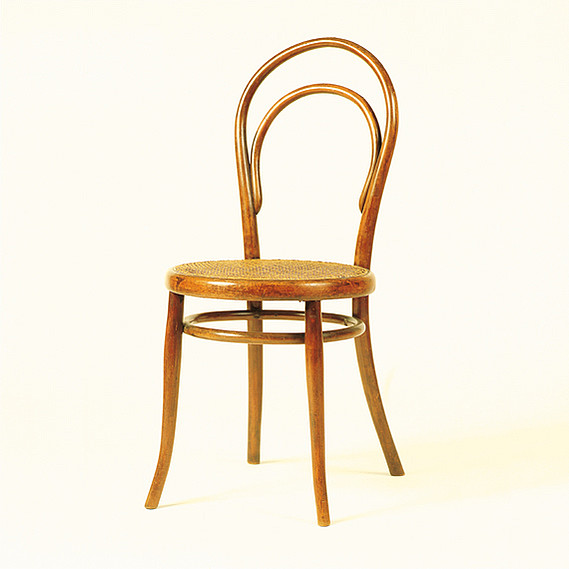
The first piece of furniture to be both attractive and inexpensive enough to appeal to everyone from aristocrats to schoolteachers. Brahms sat on one to play his piano, and millions of us have perched comfortably on them in cafés.
“One of the most beautiful chairs. It has exactly the right weight. When you pick it up, it feels perfect, an important aspect of chair design that is often overlooked.”
One of the most successful products in the history of industrial mass production, it established the international reputation of the Thonet Company. By 1930 over 50 million chairs had been sold.
“It has the freshness of a new product, because it has never been bettered.”
Michael Thonet is recognized as the founder of industrial bentwood processing. Efficient methods of manufacturing, a reduction in the individual parts of a chair, and finally the development of its own distribution network via sales offices in all major cities around the globe enabled Thonet to develop into an international company.
Michael Thonet developed a procedure of bending solid wood with steam, replacing the glued peg jointing with screws. Model No. 14 was the first product utilizing this new bentwood technique. The screwed connections meant it was now possible to ship the chairs in their individual parts for final assembly at their destination. Thirty six dismantled No. 14 chairs could be packed into a crate with a volume of only one cubic meter. Since the connections could be retightened as necessary, the lifespan of the chair was also enhanced as an added benefit.
It improves with age.
“As the screws and glue loosen, the structure becomes softer. It seems safer and more comfortable to sit in as it ages.”